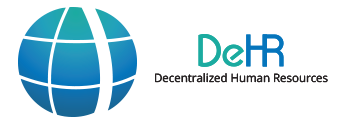Why every company’s employees should have a private ledger
The question should really be “WHEN” and not “WHY” an employee should have a record in the DLT environment.
From an EMPLOYEE perspective
- DLT gives ownership of personal and private data to the “Data Subject” (a term used by the GDPR regulation). A person is able to exercise the right to share data with whoever they wish through a consent process and can determine who should see what, for how long, and for what purpose. Unlike the present situation where data is handed over at the point of employment.
- DLT (“Blockchain”) is a hack-proof distributed data storage technology to protect employees from identity theft
- DLT networks enable employees to move from one employer to another and retain their employment record, including default superannuation account details (as recommended by the Banking Royal Commission)
- DLT “Blockchain” prevents anyone altering a person’s personal details without their permission
- DLT “Blockchain” enables verification of credentials. For example, education details, training, skills, licenses, visas, passports, criminal records, previous employment, and so on. Details that may make the difference when applying for a job when evidence of credentials is already checked.
- DLT is a global peer-to-peer technology and can be accessed anywhere, and at any time, license free. Just like social media applications (although secured with private encrypted keys) blockchain is NOT limited to a single vendor’s proprietary application, such as SAP, Oracle, Workday, etc.
- DLT enhances data accuracy. Data held about employees by companies is often out of date.
- Private data ownership is a human right already enshrined in legislation around the world and endorsed by the European Union through their funded Decode (Decentralised Citizen Owned Data Ecosystem) project
![]()
From an EMPLOYER perspective
- Current employee data storage methods are a “hacker’s delight”. Data is either stored on a central server in the cloud or on-premise in a highly vulnerable environment. Hackers have a single target to attack. With blockchain technology data is stored in a distributed environment and hackers need to access multiple servers simultaneously to breach security.
- Current employee data collected during an employment cycle is sufficient for hackers to steal identities or access bank account and other financial details and Australian legislation is tightening up on methods of protecting data and reporting breaches.
- DLT “Blockchain” is a cornerstone component of microservices architecture (see the diagram below) that is now being introduced by companies to support their digital transition strategy. Companies like Oracle, ADP and SAP are already testing or implementing new microservices products.
- Companies like Oracle and IBM have tool sets to help clients decompose their monolithic HR legacy systems into the more flexible microservices architecture.
- The initial move to set up an employee DLT record does not require a move away from current HR technology investment. Current HR legacy systems can integrate with DLT data through a secure authorized gateway.
- The ROI (Return On Investment) for companies sets the bar very low because of the small cost of participation in a DLT network. Process improvement resulting from enabling employees to update their own personal data, onboard new employees and creating new records through an automated process initiated by the new employee to download data, pre-verified credentials saves time and costs requesting background checks sometimes contacting overseas institutions, avoid delays with license checks where immediate operation is required, and a single source of truth for reporting.
- Compliance cost avoidance: As new legislation requires additional layers of security to guarantee personal data privacy, the company will have the right data architecture in place.
- Digital readiness: From an application viewpoint, DLT is the forerunner of microservices technology that will give greater flexibility to HR applications and allow new AI, IoT, etc. to plug into a digital platform, a feature not possible with most HR legacy systems. From an infrastructure viewpoint, network technology is about to undergo major changes as 5g networks, with towers and distributed data servers, along with Edge computing to support AI, IoT (such as cameras, mobile phones, etc.) is rolled out. DLT will be a beneficiary of the new technology network and more and more blockchain applications become mainstream to support the new national economic fabric.
- Protection of HR technology investment. No company wants to invest money on new HR software, and undergo the major changes associated with implementation, unless there is a reasonable life-cycle of at least 5 years. All indications are that digital capability requires new infrastructure and current Cloud Computing (running on an equally threatened internet) is almost ready to take its place alongside former generations of technology such as Client Server and Mainframe. The network for the future includes Edge technology.
The New HR Blockchain Cross-Platform Architecture

